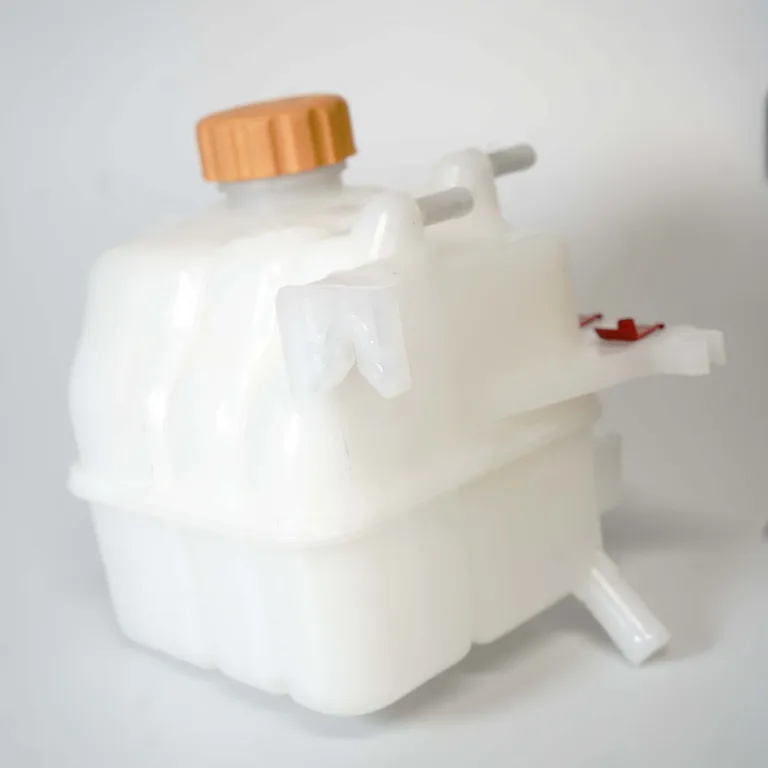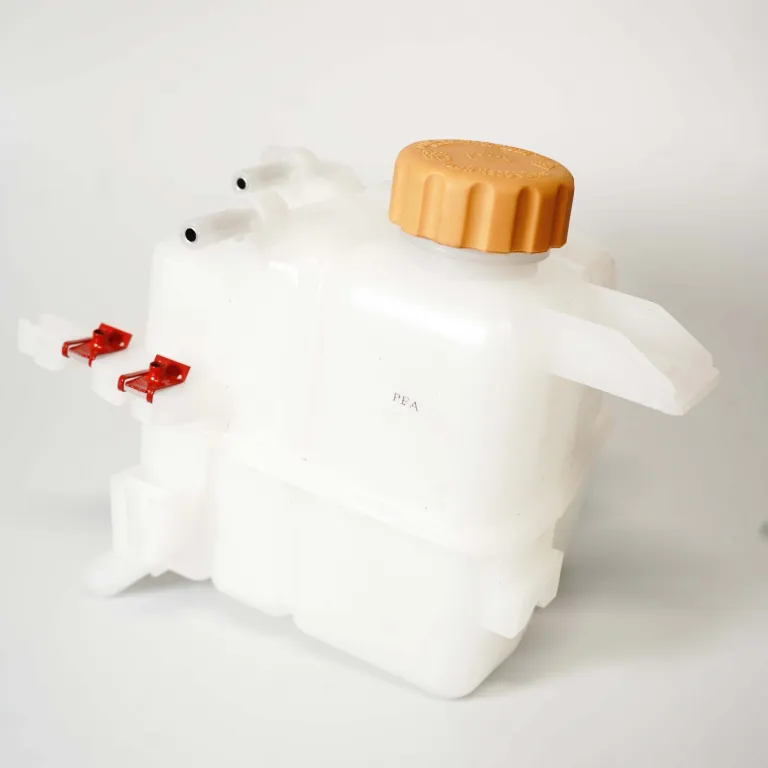Engine overheating is one of the most common problems drivers face, and it can be expensive to fix. Fortunately, regular maintenance of your car’s coolant reservoir can go a long way in avoiding costly repairs. This blog post will discuss why Coolant water supply need regular check-ups and how doing so can prevent engine overheating. We’ll also provide tips on ensuring your Coolant Reservoirs is functioning properly and preventing costly repairs. So keep reading to learn more about how prevention is the best medicine for your car’s engine!
The Importance of Coolant Reservoir Maintenance
Regular maintenance of your car’s coolant reservoir is crucial for your engine’s overall health and longevity. The coolant reservoir plays a vital role in keeping your engine cool and preventing overheating, which can lead to expensive repairs or even engine failure. One of the main reasons coolant reservoir maintenance is so important is that it ensures that your engine always has enough coolant to keep it operating at the right temperature. Over time, coolant can become contaminated or depleted, resulting in insufficient cooling and overheating. By regularly checking and topping off the coolant reservoir, you can ensure that your engine stays within its optimal temperature range and avoid the potential for costly damage.
Additionally, coolant reservoir maintenance allows you to identify any potential issues before they become major problems. A leaking coolant reservoir, for example, can lead to coolant loss and engine overheating if not addressed promptly. By regularly inspecting the reservoir for any signs of leaks or damage, you can catch these issues early on and prevent further damage to your engine.
How Engine Overheating Can Be Avoided
One of the most important ways to avoid engine overheating is to maintain your car’s coolant reservoir properly. This includes regular checks to ensure the coolant levels are adequate and the reservoir is free from leaks or damage.
First and foremost, it is essential to monitor your coolant levels regularly. If you notice the coolant is low, it is crucial to top it off immediately. Low coolant levels can lead to insufficient cooling, causing your engine to overheat. Additionally, be sure to use the correct coolant recommended by your car’s manufacturer, as using the wrong type can also contribute to engine overheating.
Another way to prevent engine overheating is to regularly inspect the coolant reservoir for any signs of leaks or damage. A leaking reservoir can result in coolant loss, quickly leading to engine overheating if not addressed promptly. By catching and repairing leaks early on, you can prevent costly damage to your engine.
Lastly, keeping your car’s cooling system in good condition is essential by scheduling regular maintenance checks with a professional mechanic. They can inspect the cooling system, including the coolant reservoir, radiator, and hoses, to ensure everything functions correctly.
Signs of a Faulty Coolant Reservoir
Your car’s coolant reservoir is an essential component of the cooling system, so it’s important to be aware of any signs that indicate it may be faulty. One common sign is visible coolant leaks. If you notice puddles of coolant under your car or around the reservoir, it indicates something is wrong. Leaks can occur due to cracks or damage in the reservoir, leading to a loss of coolant and engine overheating. Another sign of a faulty coolant reservoir is a drop in coolant levels. If you frequently need to top off the coolant, it could mean a leak or a problem with the reservoir’s seal. Additionally, if you notice any discoloration or debris in the coolant, it could indicate contamination in the reservoir.
Keep an eye out for warning lights on your dashboard as well. If your engine temperature warning light comes on or your coolant temperature gauge indicates overheating, there is likely an issue with the coolant reservoir or the overall cooling system.
If you experience any of these signs, addressing the issue promptly is important. If left unattended, faulty Coolant water supply can lead to engine damage and costly repairs. Schedule a professional inspection to diagnose the problem and determine the best action.
 Steps for Maintaining Coolant Reservoirs
Steps for Maintaining Coolant Reservoirs
Proper maintenance of your car’s coolant reservoir prevents engine overheating and avoids costly repairs. Follow these steps to ensure your Coolant Reservoirs is in top shape:
- Regularly check coolant levels: Open the hood of your car and locate the coolant reservoir. Make sure the coolant level is between the minimum and maximum markings. If it’s low, add coolant according to your car’s specifications.
- Inspect for leaks: Look for any signs of coolant leakage around the reservoir. There may be a leak if you notice any puddles or damp spots. Check the reservoir for cracks or damage and replace it if necessary.
- Clean the reservoir: Over time, debris and sediment can accumulate in the coolant reservoir. Clean it periodically by draining the coolant and rinsing the reservoir with water. This will help prevent clogs and contamination.
- Replace coolant as needed: Coolant can become contaminated over time, reducing effectiveness. Follow the manufacturer’s recommendations for when to replace the coolant. This will help maintain optimal cooling performance.
The Benefits of Regular Maintenance
Regular maintenance of your car’s coolant reservoir has several benefits that can save you time, money, and stress in the long run. By consistently checking and maintaining your coolant reservoir, you can ensure your engine stays cool and prevent costly repairs.
First and foremost, regular maintenance allows you to catch any potential issues early on. Inspecting the reservoir for leaks or damage can prevent coolant loss and avoid engine overheating. Additionally, monitoring and topping your coolant levels as needed ensures that your engine always has enough coolant to operate at the optimal temperature. This simple step can help prevent overheating and potential engine damage.
Moreover, proper maintenance of your coolant reservoir extends the overall lifespan of your engine. Keeping the engine operating at the correct temperature reduces the risk of excessive wear and tear, which can lead to premature engine failure.
Cost Comparison between Regular Maintenance and Engine Repairs
Regarding car maintenance, it’s important to weigh the cost of regular maintenance against the potential expenses of engine repairs. While it may seem like a hassle and an unnecessary expense, regular coolant reservoir maintenance is much more cost-effective in the long run. Regularly maintaining your coolant reservoir involves simple tasks like checking coolant levels, inspecting for leaks, cleaning the reservoir, and replacing coolant as needed. These tasks are relatively inexpensive and can be done at home or by a professional mechanic.
On the other hand, engine repairs can be incredibly costly. If your engine overheats due to neglected coolant reservoir maintenance, it can lead to major damage, such as blown head gaskets, warped cylinder heads, or even a completely seized engine. Repairing or replacing these components can quickly add up, often amounting to thousands of dollars. You can prevent these expensive repairs by investing in regular coolant reservoir maintenance. It’s a small price compared to the potentially catastrophic consequences of neglecting this important maintenance task.
Expert Tips for Coolant Reservoir Maintenance
To keep your coolant reservoir in top shape and prevent engine overheating, here are some expert maintenance tips:
Regularly inspect for leaks
Check your coolant reservoir for any signs of leaks or damage. Look for puddles or damp spots around the reservoir. If you spot any, it’s important to address the issue promptly and replace the reservoir if necessary.
Monitor coolant levels
Keep an eye on your coolant levels and top them off as needed. Low coolant levels can lead to inadequate cooling and overheating. Make sure to use the correct type of coolant recommended by your car’s manufacturer.
Clean the reservoir
Over time, debris and sediment can accumulate in the coolant reservoir, causing clogs and contamination. Periodically drain the coolant and rinse the reservoir with water to keep it clean and functioning properly.
Schedule regular maintenance checks
Make it a point to schedule regular maintenance checks with a professional mechanic. They can inspect the cooling system, including the coolant reservoir, radiator, and hoses, to ensure everything is in good working order.
FAQs
Here are some frequently asked questions about coolant reservoir maintenance:
1. How often should I check my coolant reservoir?
It is recommended to check your coolant reservoir at least once a month to ensure proper levels and detect any signs of leaks or damage.
2. Can I use any coolant in my car?
No, it is important to use the type of coolant recommended by your car’s manufacturer. Using the wrong coolant can lead to engine overheating and other issues.
3. What should I do if I notice a coolant leak?
If you spot a coolant leak, it is crucial to address the issue promptly. First, locate the source of the leak. If it’s coming from the reservoir, check for cracks or damage and consider replacing it. If the leak is from another component, consult a professional mechanic to diagnose and fix the issue.
4. Can I clean the coolant reservoir myself?
You can clean the coolant reservoir yourself by draining it and rinsing it with water. However, if you are unsure or uncomfortable with this task, it is best to consult a professional mechanic.
Conclusion
Regular maintenance of your car’s coolant reservoir prevents engine overheating and avoids costly repairs. You can ensure your engine stays cool and reliable by consistently checking coolant levels, inspecting for leaks or damage, and cleaning the reservoir. Regular coolant reservoir maintenance allows you to catch potential problems early on, preventing further damage to your engine. It also helps you maintain optimal coolant levels, ensuring your engine stays within its optimal temperature range. By prioritizing this simple maintenance task, you can save yourself time, money, and stress in the long run.



